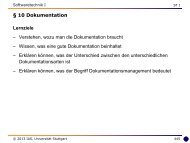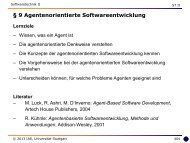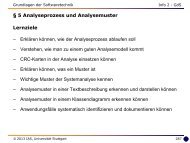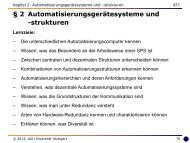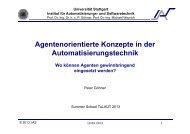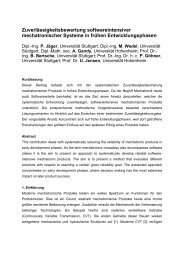Grundlagen FlexRay - Institut für Automatisierungs- und ...
Grundlagen FlexRay - Institut für Automatisierungs- und ...
Grundlagen FlexRay - Institut für Automatisierungs- und ...
Create successful ePaper yourself
Turn your PDF publications into a flip-book with our unique Google optimized e-Paper software.
<strong>Gr<strong>und</strong>lagen</strong> <strong>FlexRay</strong> BasicsV 1.1 27<br />
Figure 2.23 Principle of frequency adjustment<br />
For the calculation of the adjustments, only Sync Frames may be used. The maximum number<br />
of nodes who are permitted to transmit Sync frames is limited to cSyncNodeMax = 15.<br />
Fault Tolerant Midpoint (FTM) Algorithms [VeSc11]:<br />
• Gathering all values for ΔT offset_i <strong>und</strong> ΔT rate_i<br />
• Sorting the values from lowest to highest.<br />
• Discarding of extreme values, depending on the number of nodes in the cluster. (If the<br />
number is between 3 and 7 , the highest value and the lowest value are discarded. If<br />
the number of nodes exceeds 7, the two highest values and the two lowest values are<br />
discarded)<br />
• Calculating the adjustment:<br />
If a node detects a massive discrepancy during the procedure, it stops transmitting and<br />
switches to POC:normal passiv state.<br />
2.9 Re-Synchronization (Bit-Synchronization)<br />
Even after the synchronization, there still is a discrepancy between the timers. Also, messages<br />
are transmitted and received with an offset. To be able to properly evaluate the data, it is<br />
necessary to re-synchronize on a bit-level.<br />
Bäurle 12.10.2012




